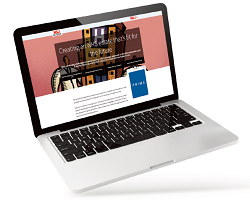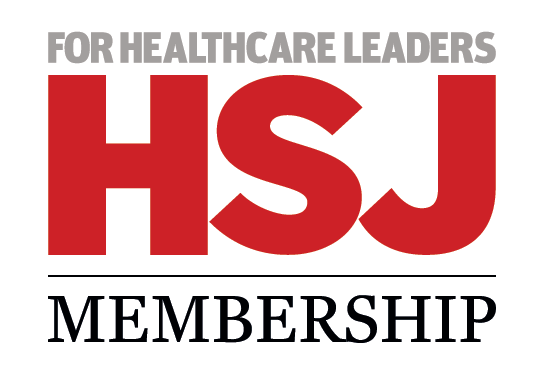Recovering services from the covid crisis is the big task for NHS leaders for the foreseeable future. The Recovery Watch newsletter tracks prospects and progress. This week by HSJ bureau chief and performance lead James Illman
The NHS’ new chief executive faces urgent decisions about how best to keep a grip on the service’s performance amid loosening covid restrictions and a service already running unseasonably hot, writes James Illman.
With Sir Simon Stevens due to step down this month and the selectors whittling down the shortlist for the next NHS England and Improvement chief at pace, the new broom will have a brimming in-tray and little time to settle in.
To name but a few things which require urgent attention, there’s the money for the second half of the year; a spending review to prepare for in the autumn; the elective backlog plan; getting ready for winter; covid-19 vaccinations; and configuring the service to deal with covid long term.
New normal flips priorities
In terms of the performance issues facing the new chief, at any other time during the last decade they would largely have surrounded emergency care and the money.
But in the new normal, this has been flipped. The priority areas are instead around addressing the huge elective backlog, with a burgeoning mental health crisis also requiring attention and funding. The workforce crisis is also sucking up bandwidth and funding. And the use of the word ‘crisis’ for both those latter areas is, sadly, fully justified.
But there have been worrying signs in recent months that emergency demand will spill over to the point where it could (a) have a hugely detrimental impact on the elective recovery and (b) the service’s ability to deal with the current covid wave, which is also gathering momentum at a frightening clip.
In the tough periods pre-covid (the last few winters in particular), the service has been forced to prioritise ruthlessly: elective moratoriums have been declared to help cope with emergency admission spikes.
But taking the foot off the electives pedal appears unthinkable this year.
Emergency pressures crank back up
Many of the woes facing the service are of course beyond anyone’s control. But one issue which remains within the gift of politicians and system leaders to thrash out is the performance regime.
NHS England announced in May it wants to push ahead with plans to replace the NHS’ four-hour emergency target with a new set of 10 metrics. But the plans still require government sign-off.
So, with the four-hour target on the way out, but the replacement not yet in, the system finds itself in between standards regimes in one of the most critical areas of its performance.
The timing of what Royal College of Emergency Medicine president Katherine Henderson called “a performance vacuum” in May – could hardly be worse, RCEM argues.
The emergency care system at the moment is seeing record demand with the RCEM reporting last month A&Es were seeing unprecedented attendances, while capacity was being hampered by covid restrictions and high numbers of staff off self-isolating.
This view was supported by The Strategy Unit, the NHS’ in-house analytics team.
The unit’s head of strategic analytics, Steven Wyatt, wrote in a blog this week: “In the first three weeks of June 2021, attendances were nine per cent higher than in the same weeks in 2019 [pre-Covid]. Indeed, attendances in the second week of June reached record levels.”
He said this was not spread evenly across the country, so while some have not seen spikes, some have seen even greater increases in attendances, “placing immense pressure on both staff and systems”.
Of course, no one is suggesting this can be fixed by targets alone. Far from it, but RCEM insists the standards issue remains a significant one.
RCEM’s vice president (policy) Adrian Boyle told me this week: “We’re in the worst possible situation [because of where the Clinical Review of Standards process is up to] in which there is no scrutiny and minimal operational grip.
“There is about to be a new chief executive of NHSE/I, and there is only an interim clinical national director of urgent and emergency care. It feels as like no one has their hand on the tiller.
“Between the Cabinet Office, the Treasury and Number 10, we’re not sure where the blockage is [on signing off on the new A&E standards].”
King’s Fund chief analyst Siva Anandaciva explained further about the quandary trusts find themselves in. He said: “Trust leaders know exactly what’s expected of them in terms their waiting lists and elective recovery trajectories, the picture of what good looks like in terms of emergency performance, at present, is far less clear.”
“Local leaders will need to have a clear idea of national expectations - both in terms what performance levels should look like, and also on what decision-making process they should go through before opting to ramp down elective work if pressures on emergency services continue to rise.”
NHS Providers chief executive Chris Hopson, however, disputed suggestions that the ongoing process of moving to a new set of urgent and emergency care targets was a significant driver of current performance problems on this care pathway.
He told me: “Trust leaders are focusing, as they always do, on treating all emergency patients to the best of their ability. That’s their job. Hitting targets is of course important, but the idea that effective clinical treatment and management of a pathway is principally dependent on a target would be disputed.
He added: “There is a very big problem on the emergency pathway, both in terms of capacity and demand. We are very struck by how many trusts are reporting record demand levels on the UEC pathway, high levels of acuity of these presentations, and then the problems caused by capacity constraints.
“The existing capacity constraints within the system, including insufficient workforce numbers, have been exacerbated firstly by infection control measures and even further by increasing numbers of staff having to self-isolate.”
Electives: it looks bad – but it’s even worse
Sajid Javid has already flagged on numerous occasions in his first public appearances as health secretary how dire the backlog is (quite possibly safe in the knowledge he can blame the predicament on his predecessor, Matt Hancock).
One glimmer of hope from the April waiting list data appeared to be a dramatic fall in the number of patients who have waited over a year fell from 436,127 in March to 385,490 (remember this was under 1,600 pre-covid and even that was considered bad).
This arrested a series of significant month-on-month increases. However, as our resident waiting list expert Rob Findlay pointed out, unfortunately, we cannot draw comfort from this.
The fall is most likely largely an artefact of the first covid shutdown: fewer patients were referred in April 2020, and that lull is now passing through the 52-week mark.
It was however certainly a significant achievement that trusts had managed to crank up elective activity levels to 90 per cent of pre-pandemic levels in May – which is well ahead of the 75 per cent threshold set out in official planning guidance.
As we explored in the last Recovery Watch though, the most pressing elective challenge hasn’t been the longest waiters, but more the backlog of so-called ‘P2s’ – patients needing treatment within a month.
The new NHSE/I chief will have to develop elective recovery and winter plans (the latter of which we have heard worryingly little) which balance these issues. There is little time before the system is plunged back into the winter and the added seasonal pressures which that will bring.
Assignments really don’t come much tougher than this.

























3 Readers' comments